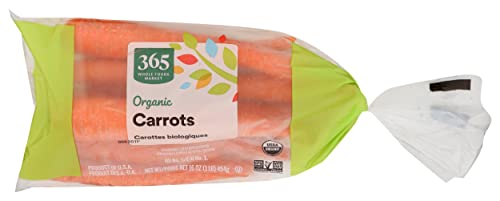Understanding Food Deserts: A Barrier to Healthy Eating
When we think about obesity, we often assume it is a symptom of having access to too much food. For some, it could be a result of not having enough access to the right foods. This is often the case with food deserts.
According to the U.S. National Research Council, a food desert is an area or neighborhood with limited access to affordable and healthful foods. This may result from few grocery stores and supermarket choices, or inadequate transportation systems to help residents get to the stores. As a byproduct of having fewer options on where to shop, residents in a food desert may also have fewer options on what to shop for. Food retailers may lack an adequate stock of fresh fruits and vegetables, whole grains, and low-fat dairy to support their community. In the United States, food deserts are almost always low-income rural or urban communities, and there are more than 6500 identified in the U.S.
The Impact of Food Deserts on Community Health
Food deserts create a public health concern due to limited access to healthy choices. Research links food deserts with hypertension, kidney disease, and reduced blood levels of carotenoids, which are indicators of fruit and vegetable intake. These health effects may result from fewer nutrient-dense choices and the increased presence of convenience stores and fast food options.
Convenience stores and fast food joints sell ultra-processed and other calorically dense products and saturated fats, sodium, and added sugar. Excessive intake of these nutrients is linked with various obesity-related diseases, so they are widely suggested to be consumed in limited quantities.
Overcoming the Challenges of Food Deserts: Strategies for Healthy Eating
Are you curious about what you can do to mitigate the impact of food deserts? Here are my top tips:
#1- Government Initiatives and Policy Changes:
Addressing Systemic Issues: Advocating for your environment can occur at the local, state, and national levels. Recommend changes to your local community, like improving transportation routes or petitioning retailers to market healthier food choices within their businesses. At the state and national level, support funding that brings affordable foods or nutrition education programs to the public. You can also contact your representatives and let them know of your community's challenges and propose practical solutions.
#2- Community-Based Initiatives:
Nothing brings the community together like a common need. Community gardens can help generate more whole foods for people to share and enjoy. Rural areas can repurpose plots of land, or urban environments can utilize unused rooftop space to create flourishing rooftop gardens. Establishing a weekly or even monthly market can provide a new way for individuals to access fresh foods. Encourage local food banks to strive to stock their shelves with fewer ultra-processed foods. Getting a dialogue going in your town about healthy food can lead to resourcefulness. After all, more heads are better than one!
#3- Food Delivery Services:
Delivery services can be a convenient way for people in food deserts to have food brought to them. Options include grocery store delivery, meal subscription boxes, or farm-to-consumer programs. However, this may not be a viable option in areas with a limited internet connection or if finances are a barrier. Note that delivery services may come with additional fees to cover transportation costs.
Everyone deserves the chance to eat nutritious food. Some of these tips may not be a viable option in your community. Ensuring everyone has access to these foods is a complex problem requiring creative solutions. What can you do to support this mission today?
-
National Research Council (US). The Public Health Effects of Food Deserts: Workshop Summary. Washington (DC): National Academies Press (US); 2009. 1, Introduction. Available from: https://www.ncbi.nlm.nih.gov/books/NBK208016/
-
Suarez, J. J., Isakova, T., Anderson, C. A., Boulware, L. E., Wolf, M., & Scialla, J. J. (2015). Food Access, Chronic Kidney Disease, and Hypertension in the U.S. American journal of preventive medicine, 49(6), 912–920. https://doi.org/10.1016/j.amepre.2015.07.017
-
U.S.D.A. (2011). Interactive web tool maps food deserts, provides key data. Retreieved March 21, 2025 from https://www.usda.gov/about-usda/news/blog/interactive-web-tool-maps-food-deserts-provides-key-data.























Comments
Join The Conversation...